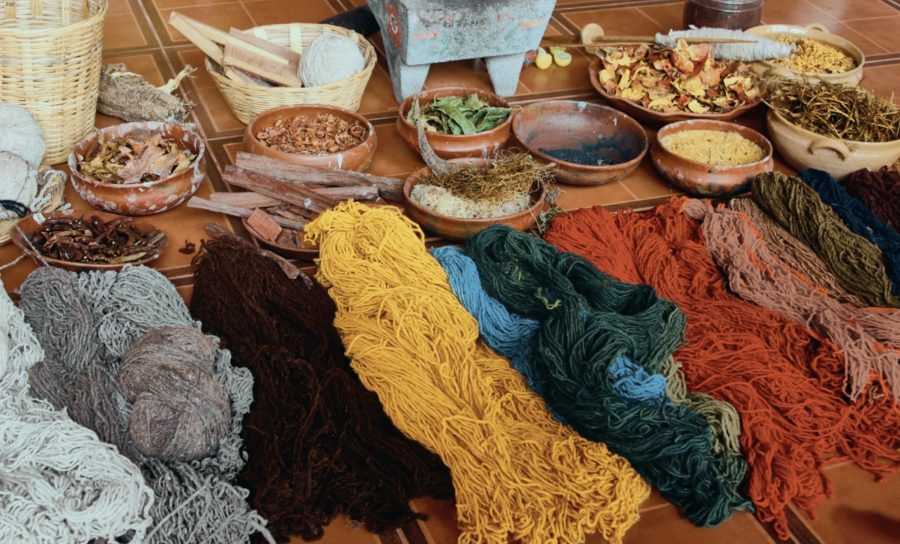Mel Thomas says you’ll already have some plants in your garden or field to use as natural dyes – and others are easy to grow…
There are many plants, fruits, spices and even invertebrates and minerals around us that willingly stain our fingers when used, so you would assume that they would happily do the same to fabric. When all said and done it is difficult to get stains out of your clothes or carpet, at the best of times; however the world of dyeing is more contrary than that. If you try and dye your beautifully spun threads from carefully selected fleeces you may encounter disappointment. It would appear that most dyes do not want to ‘fix’ themselves on to other materials unless they meet something to make them do so – this is where Mordants come into play. They will set most dyes onto fibres permanently. Unfortunately I have to get a bit technical here. to try and explain why it is not as simple as it seems, so do bear with me.
MAGIC MORDANTS THAT FIX DYES TO FIBRE
There are two kinds of natural dyes: substantive and adjective:
Substantive (or direct) dyes which will keep the colour well fixed, and to a major degree colourfast, are lichen, walnut hulls, pomegranate rind, oak galls, rhubarb (the leaves are poisonous, so dispose of them carefully), onion skins and cochineal, being the main ones.
Adjectives do not hold onto the dye, leaching it out in washing or losing it in sunlight, so these dyes need a mordant to ‘fix’ them into the fibre. By using different mordants, dyers can often obtain a variety of colours and shades from the same dye, as mordants not only fix the natural dye compounds to the fibre, but can also alter the final colour. Fibres or cloth maybe pre-treated with mordants (pre-mordant), or the mordant may be incorporated in the dye bath (meta-mordant, or co-mordant), or the mordanting may be done after dyeing (post-mordant).
Picture shows: Natural sheep wool, dyed with natural dyes. The wool is next to the clay bowls containing the natural materials from which dyes are obtained.
This article extract was taken from the August 2024 edition of The Country Smallholder. To read the article in full, you can buy the issue here.
To receive regular copies of The Country Smallholder magazine featuring more articles like this, subscribe here.
For FREE updates from the world of smallholding, sign up for The Country Smallholder newsletter here.








